Located just off Gunung Ledang (Mount Ophir) near the northern border of Johor, the journey took about 2 hours on the North South Highway, entering from the Second Link and swinging out of the highway onto a trunk road at Tangkak. The trunk road takes to the small town of Sagil, and then pass the National Reserve of Gunung Ledang. Kampung Teratai (Lotus Village) is just a little distance off.
Durians are plants from the genus Durio. The name is derived from the Malay word "duri" meaning thorn. There are some 30 species of durian, of which 9 are known to be edible. Interestingly, only one species Durio zibethinus is cultivated.
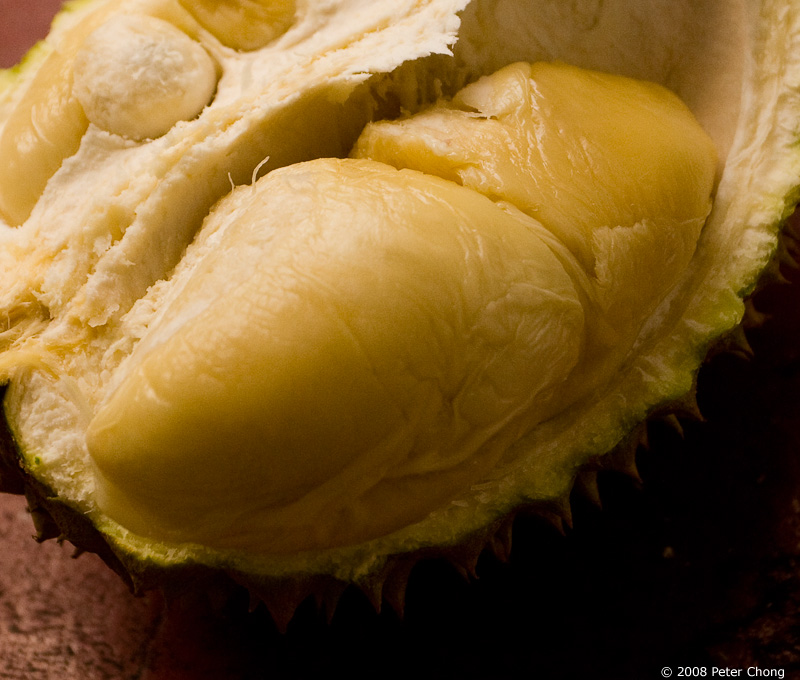
In domestic/commercial cultivation (as opposed to wild durians) are mainly propagated by grafting, marcotting, layering. These techniques produce what is known as cultivars. Each cultivar produces fruit which differ in shape of husk, shape of thorns, pulp, smell, taste, color, etc. Cultivars which are registered with agricultural authorities are desgnated with a D-number, e.g. D24, D101, and also usually have common names like "Ang Hay" (red prawn), "XO", "golden pillow", etc. Some 200 cultivars are registered in Thailand and some 100 cultivars are registered in Malaysia. Some of these cultivars have cult status, achieved because they have won some agricultural competitions or because of concentration of flavours.
Most Malaysians and Singaporeans prefer the Malaysian cultivars as opposed to what is colloqually known as "Thai Durians". Thai durians are generically more scientifically cultivated, and are more homogeneous within each cultivar, whereas Malaysian cultivars exhibit some properties which are due to the land. So a "Ang Hay" from Penang is different from one in Segamat. Again, generally Thai durians have a huge pulp, almost no seed or a vesigal seed, very sweet, sometimes sticky, and often not as fragrant as the Malaysian counterparts. Malaysia cultivars, because of the terrior, and also perhaps less scientific agricultural methodology gives rise to durians with more variety, more pungent, and stronger tasting.
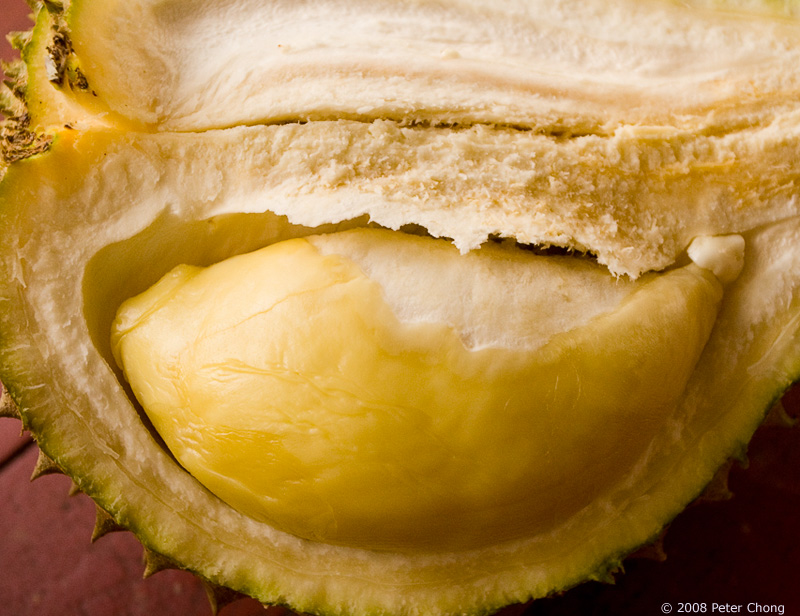
The durian buffet costs RM20 per head (originally we were quoted RM22, but we paid RM20), and includes unlimited helpings of all the durian cultivars they have on hand, except for Mao San Wang. A tasting portion of the expensive Mao San Wang is provided as part of the package.
Like eating fine cheese, there is a "proper" order to begin the durian degustation. First you start off with a mild varitey, and progress to the stronger ones.
We started off with a mild durian - the D101. The pulp is creamy, sweet and easy on the palate. If there ever was a starter durian, the D101 was it.
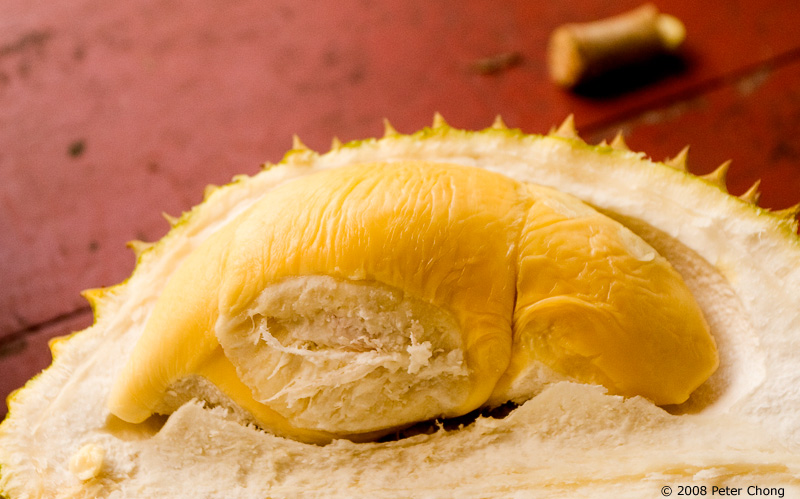
The durians were extremely fresh. Malaysian durians are left to ripen on the tree, and only considered edible when the fruit drops on its own. Thai durians are cut from the tree and allowed to ripen. The morning crop had already been loaded on lorries which left for Singapore about 8am, and comprises of fruits which fell off the trees during the night. What we were tasting were durians which fell off the tree after the lorry had left, so essentially durians which fell between 8am and 11am.
Note a waxy membrane on the pulp, indicating maximum freshness. As the membrane punctures with a bite, the smooth, creamy flesh of the durian oozes into one's mouth, providing a sensation which triggers all umami sensors. For the durian lover, this is as good as it gets.
Next up, we sampled the famous "Ang Hay". I retained the Hokkien common name as opposed to the Mandarin "Hong Xia" because this cultivar was first created in Penang, where the common language is a style of North Peninsula Malaysia Hokkien. The characteristic red pulp is very creamy, sticky. The durian was sweet, but with a bitter aftertaste, much like eating bitter chocholate.
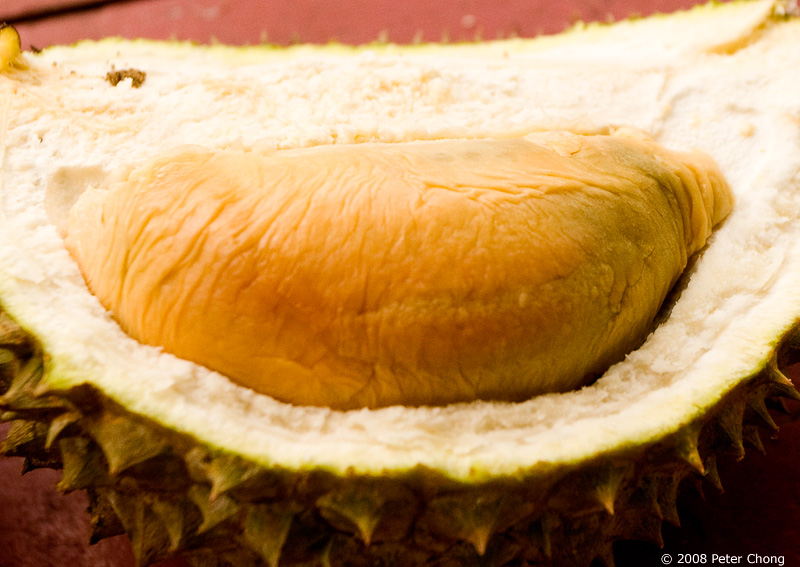
We had a few other cultivars, but the eating was vigrous, and I soon forgot which was which. Each course was different in the taste (sweet, bittersweet, sweet with bitter aftertaste, winey flavour), texture (firm, sticky, soft), and in smell (fragrant, pungent, strong).
We also had the now standard D24, also known as Sultan. It has become the standard bearer in durians, and not without reason. The pulp was yellow, and very creamy. The flesh had very little fibres, and was very aromatic. Generally, the fruit is easy on the palate. The seeds are vestigal, and very small...sometimes almost to the point of being just a thin, flat, woody piece embedded in the huge pulp. Very enjoyable.
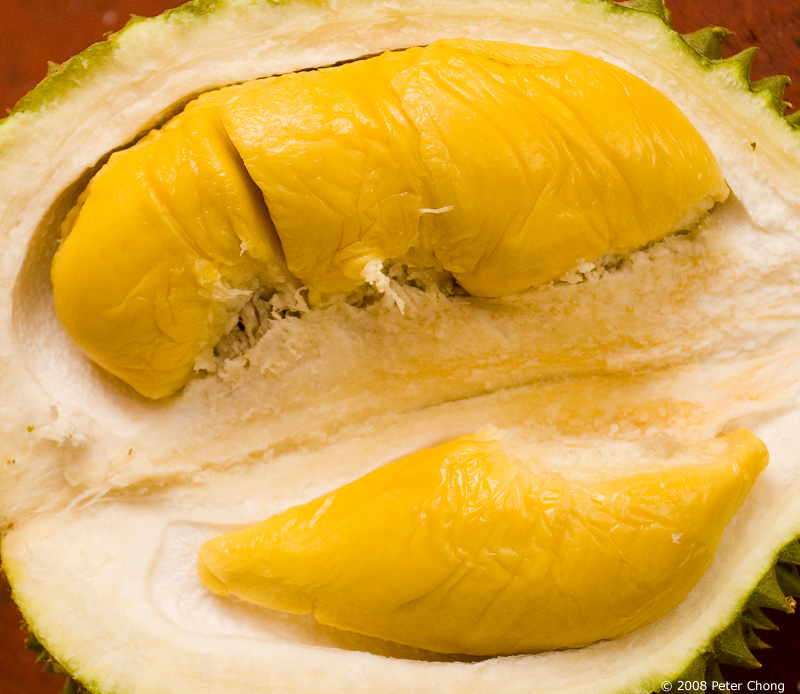
Finally, the "Mao San Wang" or Cat Mountain King. This was the piece de resistance. Selling at almost 3 times per kilogram than the rest, this was the supreme durian for the 08 season.
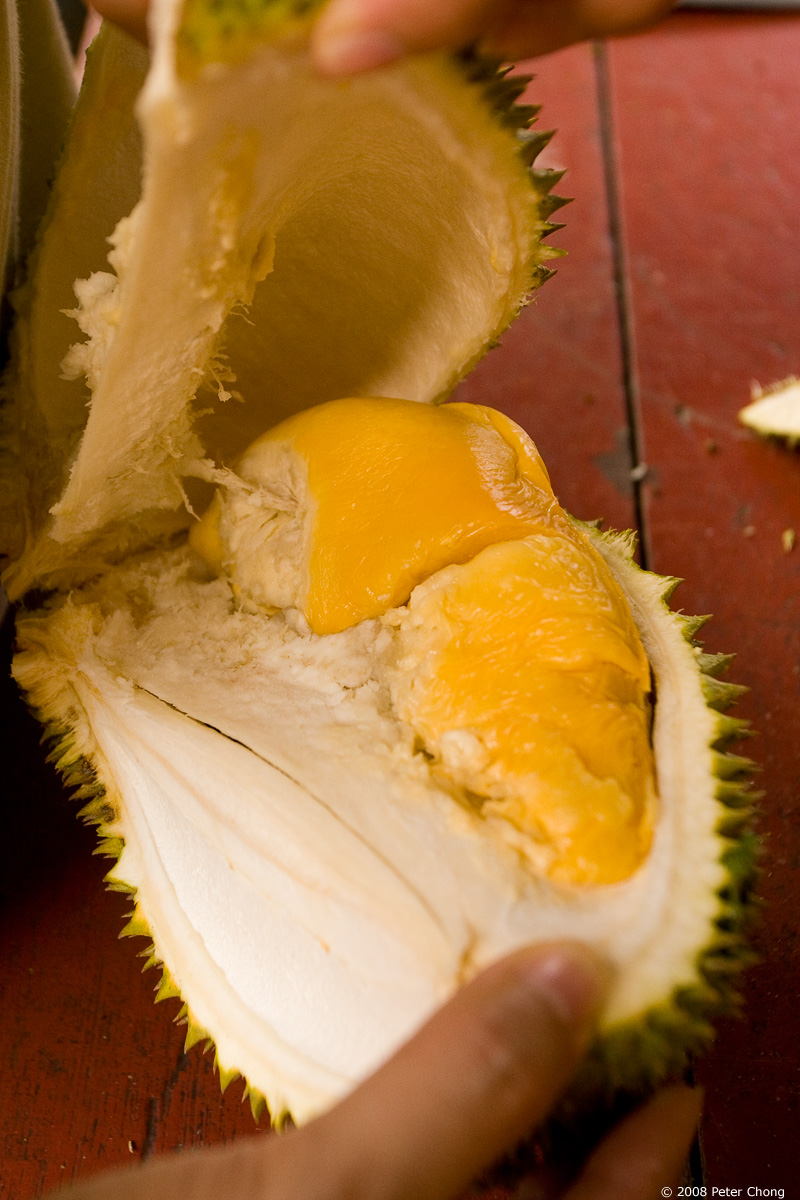
Very sweet, with a tinge of bitterness. Very creamy, concentrated flavours, with very little fibres, the pulp was incredible! If the French were durian lovers, I am sure they will have a special word for this, but alas they don't, and I guess I have to make do with "very shiok". Like comparing a well prepared, fresh ristretto with a regular cup of Americano coffee - the body of the pulp, the extreme concentration of the flavours, the mouthfeel is second to none. Excellent.
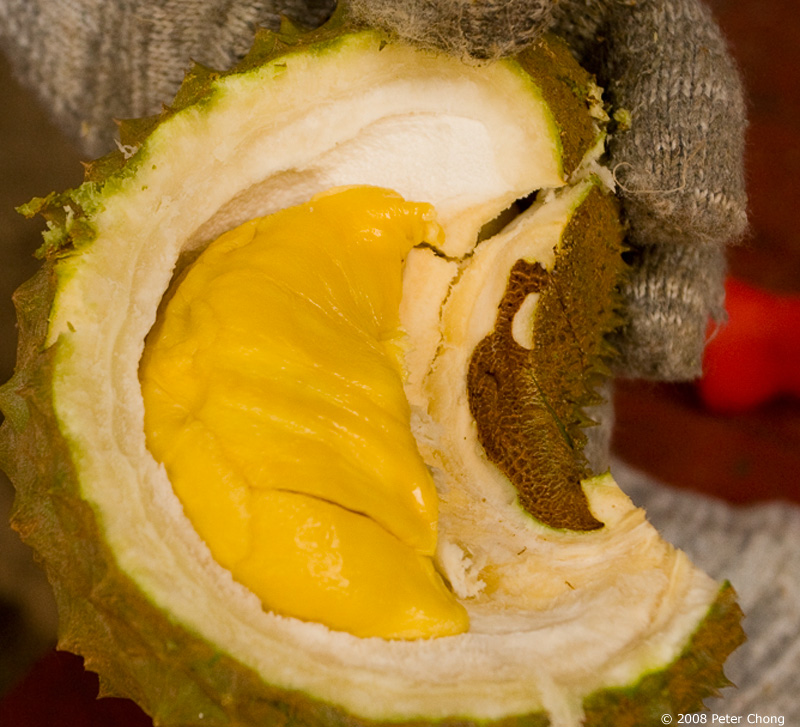
I bought some 5 more fruits for taking away. One of each cultivar I sampled. And one Mao San Wang. The MSW was sold at RM15/kg, and the rest cost RM5/kg. Totalling about RM78 for all 5, I opened them at home and sampled them. They were every bit as good. Nothing like fresh durians purchased direct from a plantation.
For 2009 exploits, please see latest report here.
 Mr. Gan's Durian Degustation.
Mr. Gan's Durian Degustation.
8 comments:
Hi, can I have the contact info of the place in JB for the durian buffet?
pls drop me a mail at atmilan@gmail.com
thks
Sure at...
Mr Gan
Malaysia HP: 019-7082800, 017-2048822
Singapore HP: 92370113, 93857433
Enjoy.
Hi Peter
Do u hv the exact address of the plantation?
Something tt can be googled-earth (I dun hv GPS but if u hv the ref, might as well). Many thanks
beemer75@hotmail.com
Hi Peter,
This is Terry. Well I am interested in the durian buffet. May I know the Mr Gan Hp number still remind the same as Malaysia HP: 019-7082800, 017-2048822
Singapore HP: 92370113, 93857433?
Would u mind reply to shabterry@hotmail.com
thanks
Hi
can i have the address and contact no. to the durian buffet?
Hi,
Can I have the exact address of Kampung Teratai and Pekan Nanas?
If possible, let me know which route you used to drive up there.
I am planning for a durian road trip soon.
Please email me @ deathknight81@gmail.com
Hope for your reply.
Cheers and many thanks.
Hi Friends,
For durian lover, you may try Mr Gan plantation at Kampung Teratai (near Segamat) as i went there last Sat (3rd July). U can try variety of good taste durians for just paying RM25 per person....Is worth for it...U may called Mr Gan at 0197082800 if u need Mao san wang to be reserved as this durians is the hot seller..
Thanks Obama for the update. Appreciate it.
Post a Comment